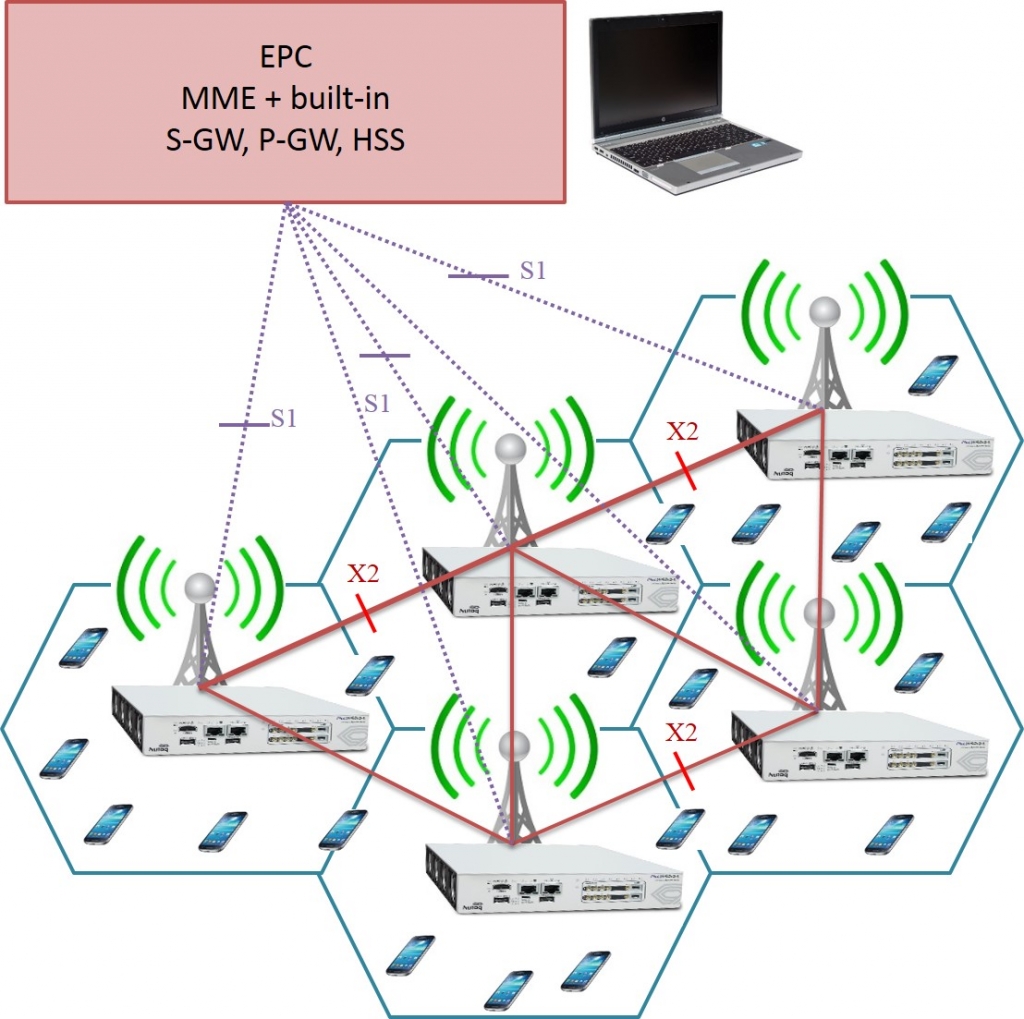4G/LTE Mobile Network Test Bed
by Wenwei Weng
During the software development of mobile router, IOT gateway, it is essential to have 4G/LTE test bed in place.
 In this post, I will cover three approaches to set up test bed for 4G/LTE test bed.
In this post, I will cover three approaches to set up test bed for 4G/LTE test bed.
To have a cost effective, and easy to use 4G/LTE test bed is critical for software development when it comes to mobile router, IOT gateway software development. It could be also critical for hardware compliance testing as well.
In my lab at Cisco, there are three approaches:
- Using SIM card from carrier, and connect to live 4G/LTE network.
- Using the dedicated base state simulator (BSS)
- Using software defined radio (SDR) picoLTE
The above three ways, there are pros and cons as decribed below.
Using SIM card from carrier, and connect to live 4G/LTE network.
With this approach, you can buy SIM card from wireless carrier like AT&T, Verizon, T-Mobile. The SIM card is inserted into unit under test (UUT), it is ready for testing.
pros:
- Minimum effort to prepare.
- Very minimum initial cost to start.
</ol>
cons:
- It requires monthly payment even when it is not used.
- The network is not under fully controlled enviroment. Even though most time the carrier network should be up running, there is down time for sure. This will add up another variable. This could be a serious concern especially when the software is still under development.
- This is not suitable for performance testing.
- One SIM card is limited to the modem for the carrier only, i.e. it can NOT be used to test different model of modems.
- The whole enviroment is under fully controlled, meaning it is stable and to be trusted.
- It typically provides ethernet port to feed traffic from device like IXIA, Spirent for performance testing.
- It can test various modems by changing the setup.
- It can do almost all kinds of testing.
- BSS is very expensive, a basic setup box easily costs $70K. This is a lot investment!
- Typically one box can be used to test one UUT at one time, at most two UUTs.
- The setup is quite complicated.
- It is cost effective comparing to BSS (only cost 1/3 or half)
- It can test many UUT devices(e.g. 50) in the sametime.
- It runs under a controlled enviroment.
- The setup is relative easy. Mainly it needs to change the configuration file to change the radio frequency.
- It can NOT be used for performance testing.
Subscribe via RSS